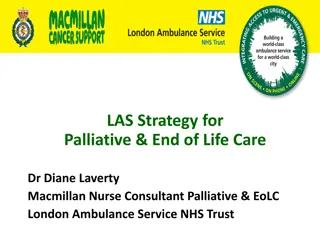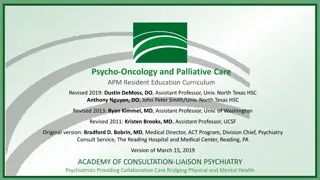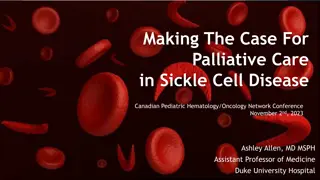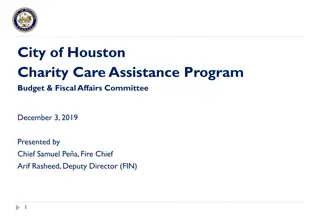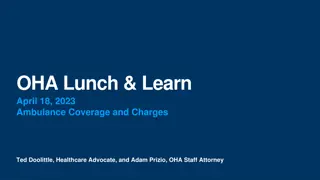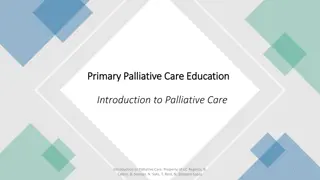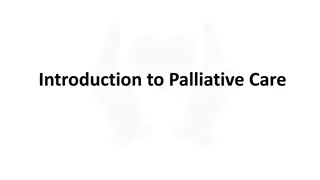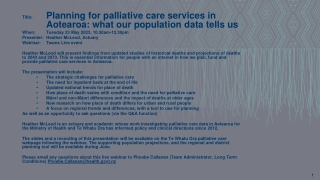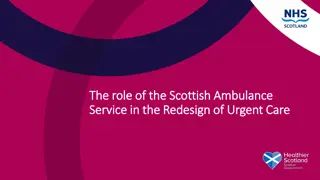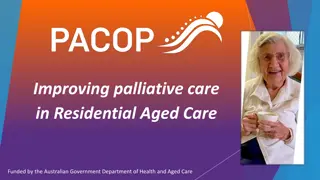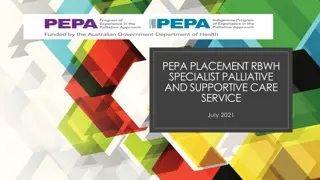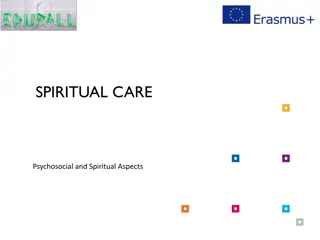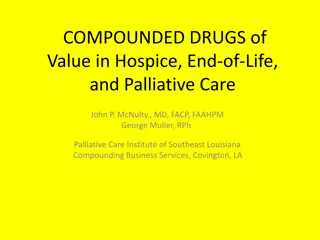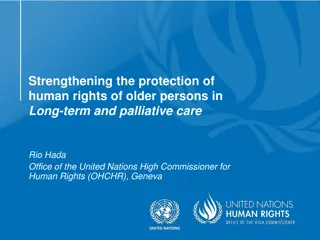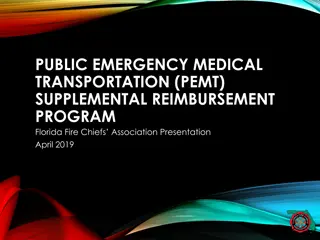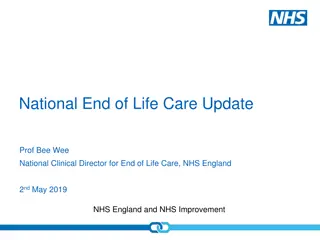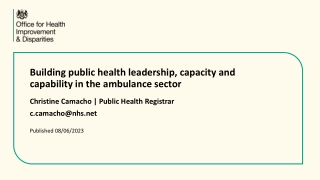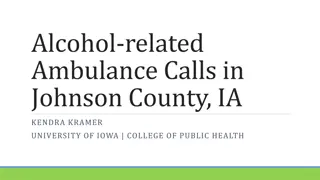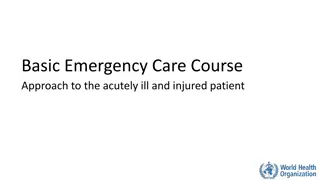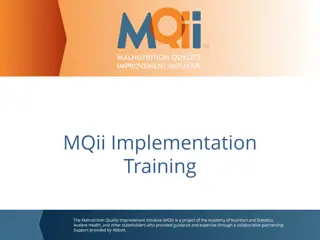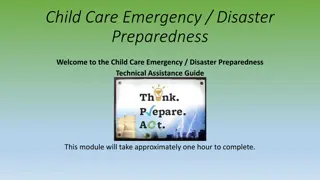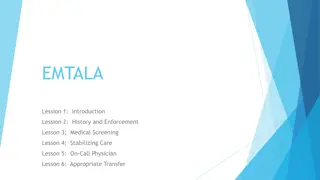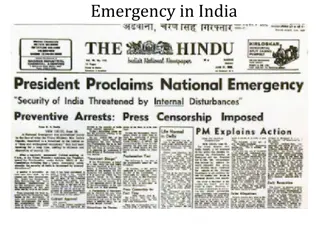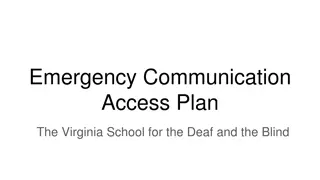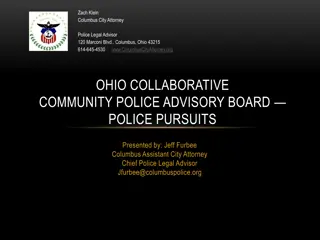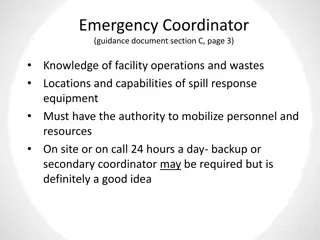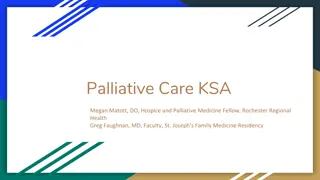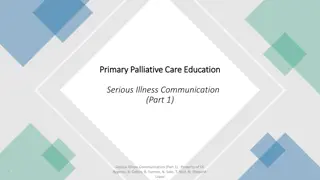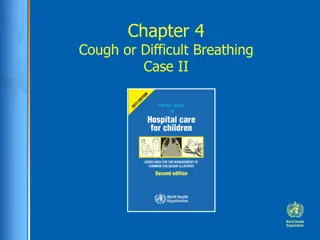The Role of Emergency Ambulance Service for Palliative Care Patients
Exploring the critical role of the Emergency Ambulance Service in providing palliative care from a multidisciplinary perspective. Challenges and responsibilities faced by ambulance staff in delivering end-of-life care are highlighted, along with the need for improved training and communication in this essential aspect of pre-hospital work.
Download Presentation

Please find below an Image/Link to download the presentation.
The content on the website is provided AS IS for your information and personal use only. It may not be sold, licensed, or shared on other websites without obtaining consent from the author. Download presentation by click this link. If you encounter any issues during the download, it is possible that the publisher has removed the file from their server.
E N D
Presentation Transcript
THE ROLE OF THE EMERGENCY AMBULANCE SERVICE FOR PALLIATIVE CARE PATIENTS FROM GREEN TUNIC TO GREEN TROUSERS Joe Mooney Advanced Paramedic National Ambulance service Multidisciplinary Study day Thursday 26th September 2019. Twitter: @josephmooney
NATIONAL AMBULANCE SERVICE EMTs, Paramedics, Advanced Paramedics Emergency ambulance, motorbikes, RRVs, ICVs, Bumbulance, IPATS, MICAS, NNTP, supported by Irish air corps and Irish Coast Guard with helicopters, Dublin area we have 4 stations, Swords, Dublin South Central(Inchicore), Tallaght and Loughlinstown
OUR ROLES (I BELIEVE ARE) To support patients and family's at this difficult time To diminish pain and suffering To understand the needs of these patients To not bring patients to ED if not required To educate staff of NAS in palliative care
CHALLENGES Palliative care is an ever growing aspect of pre hospital work- with little or no formal training Called to the sickest patients in the community with limited knowledge of these patients. Family's expect us to do interventions (sometimes) DNARs not available in the community or nursing homes (sometimes) For hospice staff to understand the role and abilities of pre hospital care providers in delivering end of life care. Accessing out of hours palliative care teams via ambulance crews. It s a grey area in our profession CPGs not enacted but we do have medico in Cork
WHAT CPG SHOULD SAY .. . DO AS HOME CARE PLAN SAYS
UNPUBLISHED** RESEARCH FROM MEDICO CORK Five organizing themes came up: 1. education and training; , limited training in managing end of life scenarios and inadequate staff supports 2. current clinical practice guidelines; lack of support from current clinical practice guidelines 3. communication; Poor communication between those involved in patient care 4. environment The environment in which end of life patients were managed also had an effect on how challenging paramedical practitioners found the call. 5. staff support, The environment in which end of life patients were managed also had an effect on how challenging paramedical practitioners found the call. Conclusions: The pathway to improving end of life care must include an emphasis on improvements in practitioner education and training, enhanced communication between all those involved in a patient s care and offering non didactic clinical practice guidelines that are practitioner driven and patient-focused. It must also include increased psychological supports for paramedical practitioners dealing with end of life patients.
DO THINGS NEED TO CHANGE ? Pre hospital cardiac arrest ? Or peacefully died at home ? Some level of training for paramedics as part of their training Enacted palliative care CPG DNAR standard across all health care with agreement with what is a recent timeframe for them to be accepted by ambulance crews
THANK YOU VERY MUCH Any questions


